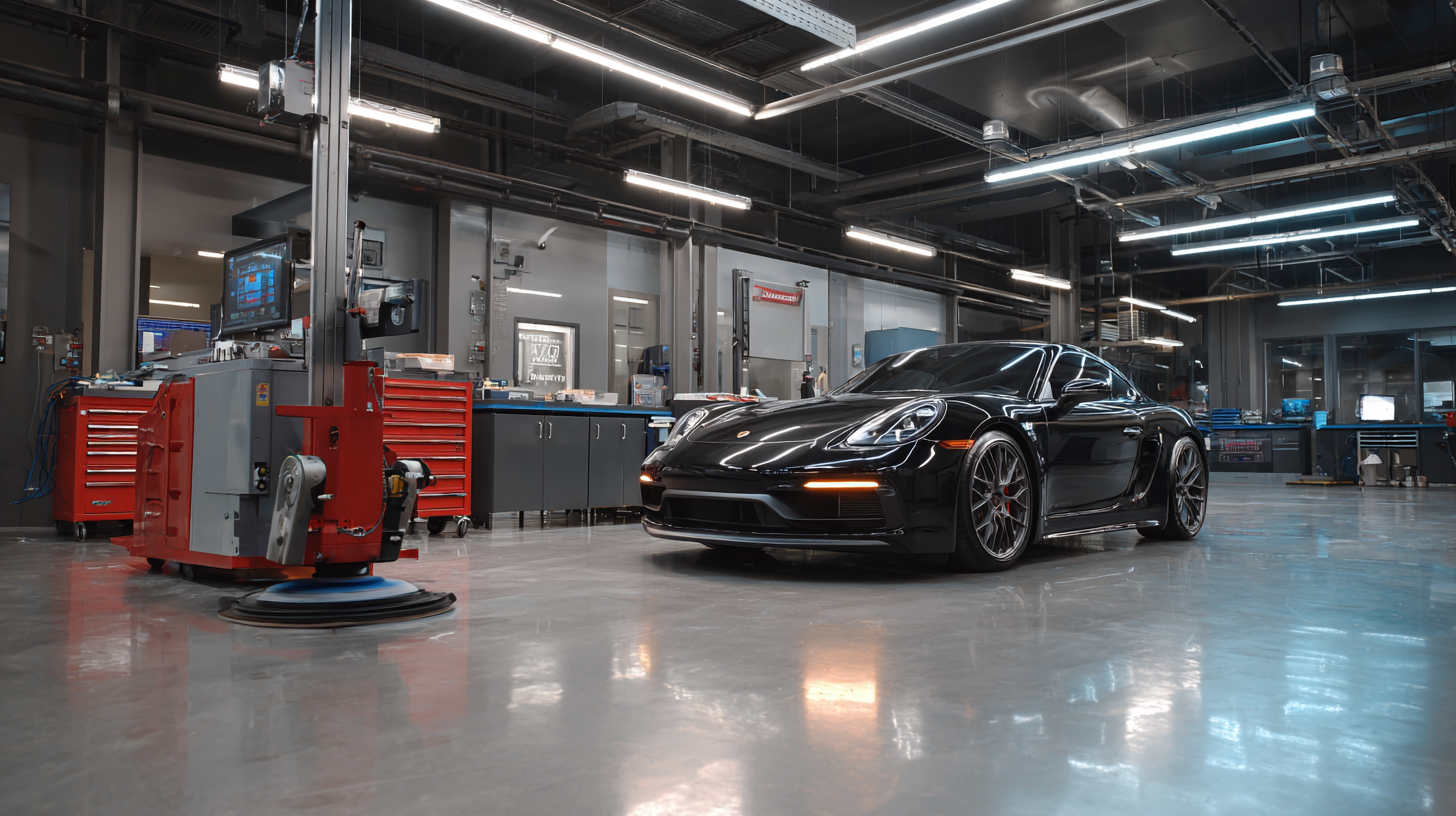Office USA: 706-658-1122 | Tech Support: 706-362-4813
Office Bulgaria: +359 431 64477
Solutions for Achieving Perfect Finishes with the Best Polisher Machine
In the pursuit of perfection, achieving a flawless finish on various surfaces is a challenge that many professionals face, from automotive refinishing to woodworking. The secret to mastering this craft often lies in the right tools, and one such essential tool is the polisher machine. This blog explores innovative solutions and techniques for utilizing the best polisher machines available on the market today. We will delve into the significance of selecting a high-quality polisher machine from reputable manufacturers, such as those in China that provide superior products for global markets. By understanding the capabilities and features of different polishing machines, users can enhance their skills and achieve remarkable results, transforming everyday projects into exceptional work of art. Join us as we uncover the key factors that contribute to perfect finishes and elevate your polishing game to new heights.

Choosing the Right Polisher Machine for Your Finish Needs
When it comes to achieving a flawless finish, selecting the right polisher machine is paramount. The first step in this process is identifying the specific finish needs you have, whether it's for automotive, woodworking, or even concrete surfaces. Different projects require different types of polishers, and understanding their unique functionalities can significantly affect the outcome. For instance, rotary polishers are ideal for heavy cutting and providing an ultra-smooth finish on large surfaces, while dual-action polishers are better suited for smaller projects that require a gentle touch and less risk of damaging the material.

Additionally, consider the polisher's features, such as speed settings, pad compatibility, and ergonomic design. A machine with variable speeds allows for greater control, making it easier to adjust based on the intricacies of your project. Furthermore, investing in high-quality polishing pads that match your polisher can enhance the quality of your finish. With a thoughtful approach to selecting the right polisher machine tailored to your finishing needs, achieving that perfect sheen is within your grasp, transforming your projects into visually stunning results.
Understanding Different Types of Polisher Machines and Their Uses
When it comes to achieving perfect finishes, understanding the different types of polisher machines available is crucial. There are primarily two types of polishers: rotary and dual-action (DA) polishers. Rotary polishers are known for their power and speed, making them ideal for professional detailers who need to remove heavy scratches and oxidation from surfaces quickly. However, they require a certain level of skill to use effectively, as improper technique can lead to swirl marks or damage the paint.
On the other hand, dual-action polishers are more user-friendly and versatile, making them suitable for both beginners and experienced users. They work by combining a circular motion with an elliptical orbit, which helps to distribute pressure evenly across the surface, minimizing the risk of damage. This makes DA polishers excellent for detailing applications, such as applying wax or sealants and achieving a brilliant shine on paintwork. Each type of polisher has its specific applications, and choosing the right one depends on your particular needs and expertise level in automotive detailing.
Perfect Finishes: Comparison of Polisher Machine Types
This chart compares the effectiveness of different types of polisher machines for achieving perfect finishes. The effectiveness is rated out of 10, where 10 represents the highest performance for finishing surfaces.
Essential Techniques for Achieving a Flawless Finish with a Polisher
Achieving a flawless finish with a polisher involves mastering essential techniques that can significantly enhance the outcome of your polishing efforts. According to a report by the International Surface Finishing Association (ISFA), nearly 70% of professionals emphasize the importance of technique over equipment when it comes to getting the perfect shine. Understanding the intricacies of pad selection and polish application can make a world of difference, particularly in industries where surface quality directly impacts product integrity and aesthetic appeal.
One vital technique is to maintain the right speed and pressure during the polishing process. Industry insights suggest that a varying speed approach can yield superior results; for instance, starting with a lower speed to spread the polish evenly before ramping up for effective cutting. Additionally, employing a technique known as the "cross-hatch" pattern can ensure complete surface coverage, reducing swirl marks and achieving that showroom-quality finish. The American Society for Quality (ASQ) has found that proper training in these techniques can increase efficiency and reduce defects by up to 30%, underscoring the significance of skill in achieving impeccable results with even the best polishing machines.
Common Mistakes to Avoid When Using a Polisher Machine
When using a polisher machine, avoiding common mistakes can significantly improve your finishing results. One of the most frequent errors is using too much pressure on the polisher. This not only affects the machine's performance but can also lead to uneven finishes or paint damage. Instead, let the machine do the work; a light touch is often sufficient.
Another common mistake is neglecting the surface preparation. Skipping this crucial step can leave dirt or contamination, which results in a less-than-perfect finish. Always ensure the surface is clean and free of debris before starting the polishing process. To enhance your results, apply a suitable polish that matches your material type, as this ensures compatibility and effectiveness.
Lastly, using the wrong pad can also hinder your results. Choosing the correct pad for the specific task is essential; for example, a foam pad is typically best for finishing, while a wool pad is more suited for heavy cutting. By paying attention to these details, you’ll achieve a pristine finish that reflects your effort and skill.
Maintenance Tips for Keeping Your Polisher in Top Condition
Maintaining a polisher machine in optimal condition is crucial for achieving perfect finishes, especially in industries where surface quality is paramount. According to a report by the International Society of Coating and Painting (ISCP), regular maintenance can enhance the lifespan of polishing equipment by up to 30%. This not only saves costs associated with repairs and replacements but also ensures that the quality of the finish remains consistent over time. A well-maintained polisher will provide more even pressure and better RPM consistency, resulting in superior outcomes.

